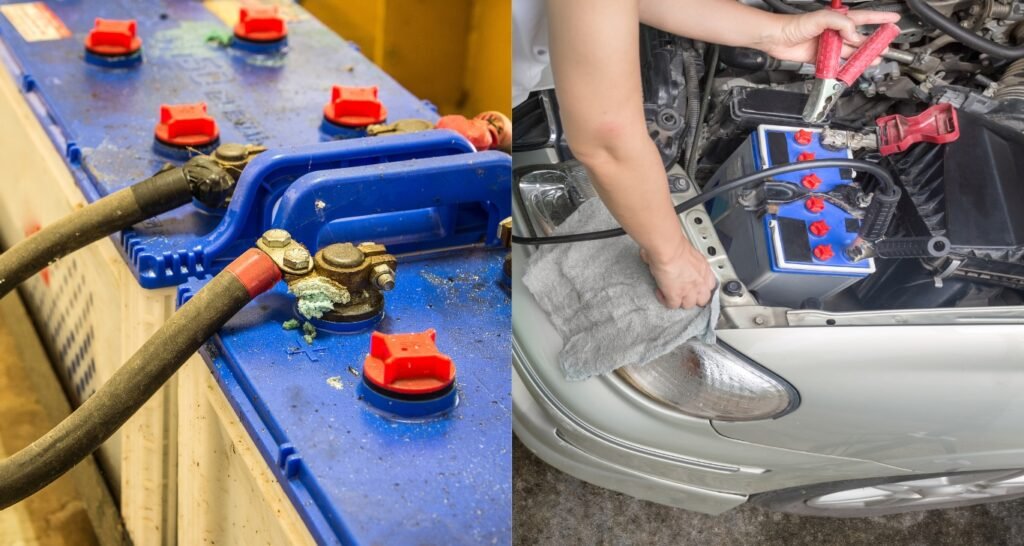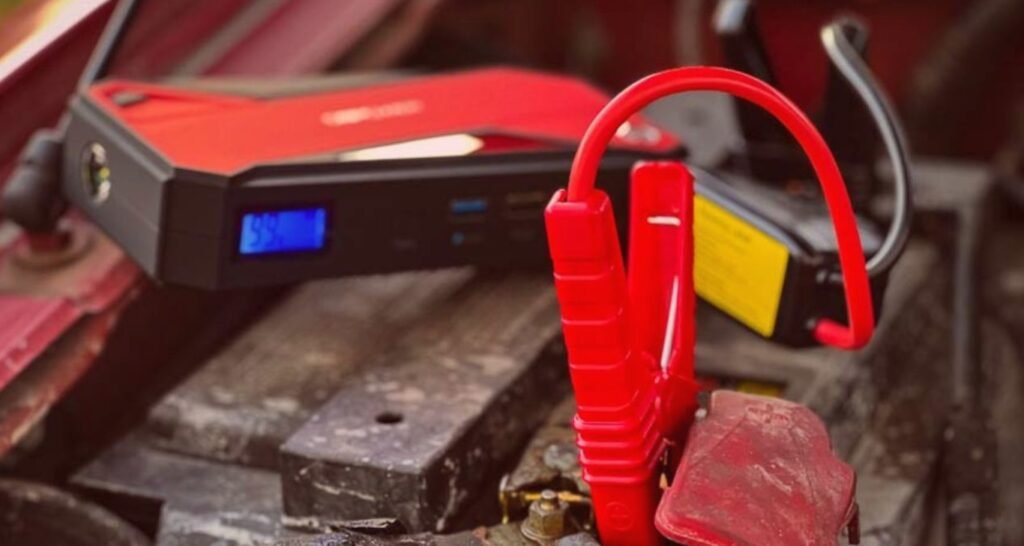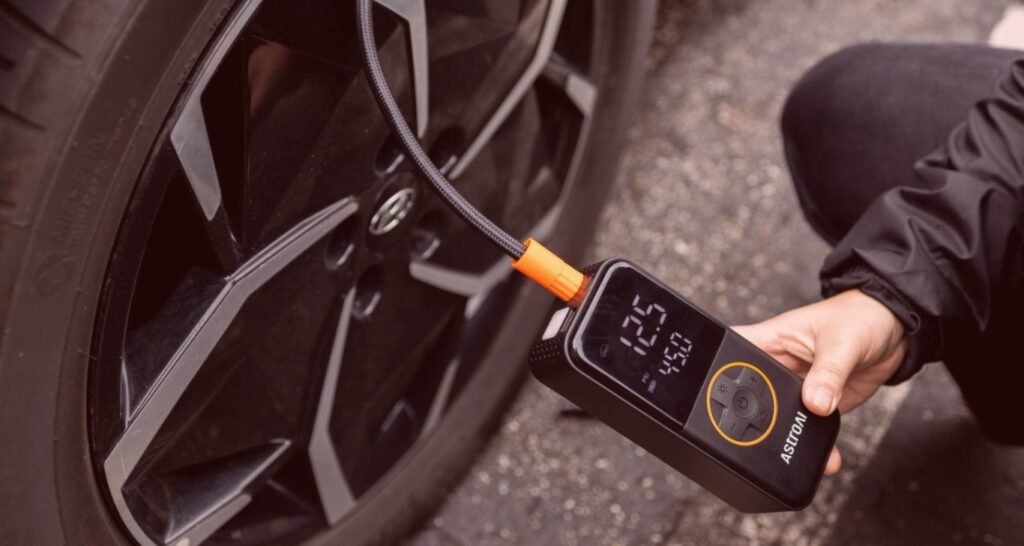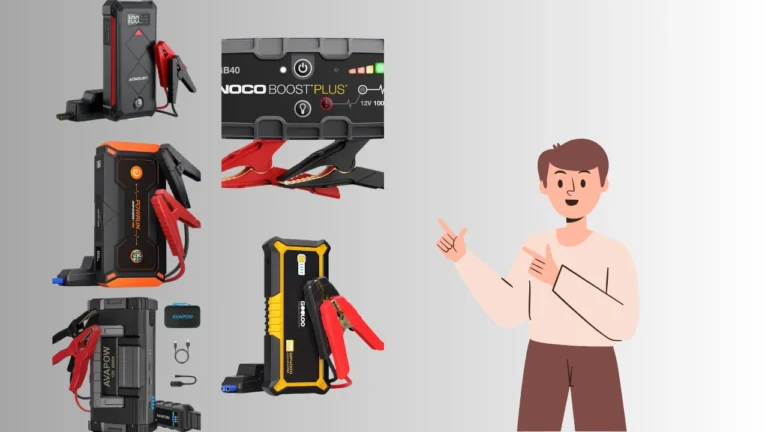Most passenger vehicles use a 12V battery. Occasionally, you might need to jump-start a 24V system with a 12V source, such as when a 24V battery runs flat, and only a 12V battery is available. There are two primary methods for achieving this: connecting two 12V batteries in series to create a temporary 24V source or using a step-up converter to increase the voltage from 12V to 24V. So, how to jump start 24V with 12V battery?
If you are considering to buy best portable marine jump starters, you can read my full review with highlighted features of each product.
Is It Ok to Jump Start 24V with 12V Battery?
Jump-starting a 24V system using a 12V battery is possible but should be approached with caution. The key is that you are only jump-starting one of the two 12V batteries within the 24V system, not the entire system at once. This method can help start the vehicle if one of the 12V batteries still holds some charge. However, this process requires correct connections—positive to positive and grounding the negative cable to the chassis of the vehicle, not directly to the battery.
For you, I’ve answered some quick queries:
What You Should Know About 24V and 12V Battery Systems?
A 24V battery system is common in heavy-duty vehicles such as trucks, buses, construction equipment, and military vehicles, which require higher voltage to power large engines and complex electrical components. A 24V system is typically made up of two 12V batteries connected in series, which doubles the voltage to 24V while maintaining the capacity of a single 12V battery.

Jump Start 24V with 12V Battery | 2 Easy Methods
By understanding the methods, safety precautions, troubleshooting tips, and maintenance practices, you can be prepared to handle battery emergencies effectively. Remember, taking the time to properly maintain your batteries can help prevent future issues, ensuring you remain safe and ready for the road ahead. Here’s how to jump start 24V with 12V battery:
Method 1: Using Two 12V Batteries in Series
This is one of the simplest and most cost-effective ways to jump-start a 24V system when you have access to two 12V batteries. By connecting these two batteries in series, you can effectively create a 24V power source.

Step-by-Step Instructions:
Step 01: Prepare Your Materials
You will need two fully charged 12V batteries, a set of jumper cables, and protective gear such as gloves and safety glasses.
Step 02: Position the Vehicles
Ensure that the vehicle with the 24V battery and the two 12V batteries are close enough for the jumper cables to reach but not touching. Maintaining a safe distance helps prevent accidental sparks or arcing.
Step 03: Connect the Batteries in Series
- Connect the positive terminal of the first 12V battery to the positive terminal of the second 12V battery, effectively doubling the voltage to 24V.
- Next, connect the negative terminal of the first 12V battery to the positive terminal of the 24V battery system that needs to be jump-started.
- Finally, connect the negative terminal of the 24V battery to the negative terminal of the second 12V battery to complete the circuit.
Step 04: Initiate the Jump-Start
- Attach the positive jumper cable to the positive terminal of the 24V battery and the other end to the positive terminal of the 12V battery setup.
- Connect the negative jumper cable to the negative terminal of the 24V battery and the negative terminal of the 12V battery setup.
- Start the vehicle with the 24V battery. If it does not start immediately, wait a few minutes before trying again.
Step 05: Disconnect Safely
Once the vehicle starts, disconnect the jumper cables in the reverse order to prevent electrical damage or sparks. Start with the negative cables and then remove the positive ones.
This method is effective when you have access to two 12V batteries. However, it requires careful attention to ensure the connections are correct and safe to avoid damaging the vehicle’s electrical systems.
Method 2: Using a Step-Up Converter
A step-up converter, or boost converter, is an alternative method for jump-starting a 24V system using a single 12V battery. This device increases the voltage output from 12V to 24V, allowing you to charge or jump-start a 24V battery system.

Step-by-Step Instructions:
Step 01: Select a Suitable Step-Up Converter
Choose a step-up converter designed for automotive use. Ensure it can boost the voltage from 12V to 24V and is compatible with your vehicle’s requirements.
Step 02: Connect the Converter to the 12V Battery:
Attach the input terminals of the step-up converter to the corresponding positive and negative terminals of the 12V battery. Follow the manufacturer’s instructions to ensure proper connections.
Step 03: Attach to the 24V Battery
Connect the output terminals of the step-up converter to the 24V battery, ensuring that the positive and negative terminals are matched correctly.
Step 04: Activate the Converter
Turn on the step-up converter and allow it to charge the 24V battery for at least 30 minutes. The converter will gradually increase the voltage to 24V.
Step 05: Jump-Start the Vehicle
Once the 24V battery has gained enough charge, attempt to start the vehicle. If it does not start right away, wait a few more minutes and try again.
Step 06: Disconnect Carefully
When finished, turn off the step-up converter and disconnect all cables in the reverse order of connection to prevent any electrical issues.
Safety Precautions to Follow
Jump-starting a 24V battery using a 12V source involves handling electrical components that can be dangerous if not done correctly. Here are some essential safety precautions:

- Wear Safety Gear: Always wear safety glasses and gloves to protect yourself from potential sparks or battery acid exposure.
- Work in a Well-Ventilated Area: Jump-starting batteries can produce gases, so ensure you’re in an open or well-ventilated space.
- Avoid Sparks: Ensure that jumper cables do not touch each other or any metal parts of the vehicle to avoid creating sparks.
- Check Battery Condition: Inspect both batteries for any signs of damage, leakage, or corrosion. If you detect any issues, do not proceed with the jump-start.
- Follow Proper Connection Procedures: Make sure that all connections are secure and correctly oriented to avoid damage to the vehicle’s electrical system.
Troubleshooting Tips for a Successful Jump-Start
If you run into problems during the jump-start process, here are some troubleshooting tips:
- Check Cable Connections: Make sure all jumper cables are properly connected. Loose or poorly connected cables can prevent power transfer.
- Verify Battery Charge Levels: Ensure that the 12V batteries are fully charged. A weak or partially charged battery may not provide enough power to start the 24V system.
- Clean Battery Terminals: Use a wire brush or terminal cleaner to remove any corrosion or dirt from the battery terminals to ensure a good electrical connection.
- Examine the Step-Up Converter: If using a step-up converter, double-check the connections and functionality. Make sure it’s turned on and operating correctly.
- Consider Battery Replacement: If all else fails and the 24V battery remains unresponsive, it may need to be replaced. Batteries have a finite lifespan, and a damaged or severely depleted battery may not recover through jump-starting alone.
5 Common Mistakes to Avoid
Jump-starting a battery, especially a 24V system, requires careful attention to avoid common mistakes:

- Incorrect Cable Connections: Connecting the wrong terminals (positive to negative) can cause serious damage to the electrical system and may even result in a fire.
- Ignoring Battery Condition: Do not attempt to jump-start a damaged or leaking battery, as this can be dangerous.
- Skipping Safety Measures: Always wear protective gear and ensure the area is clear of flammable materials.
- Rushing the Process: Take your time to ensure all connections are correct. If the vehicle does not start immediately, wait a few minutes and try again.
- Not Disconnecting in the Correct Order: Disconnect the jumper cables in the reverse order to prevent electrical damage.
Tips for Battery Maintenance
Proper maintenance of both 12V and 24V batteries can prolong their lifespan and reduce the likelihood of needing a jump-start:
- Regular Inspections: Periodically check for signs of corrosion, leakage, or damage.
- Keep Terminals Clean: Use a mixture of baking soda and water to clean battery terminals and prevent corrosion.
- Maintain Proper Charge Levels: Avoid letting your batteries discharge completely. Use a battery maintainer or charger if the vehicle will not be used for extended periods.
- Avoid Extreme Temperatures: Protect your batteries from extreme heat or cold, as both can reduce battery performance and lifespan.
- Limit Short Trips: Short trips do not allow the battery to fully recharge, leading to reduced battery life. Aim for longer drives to keep the battery charged.
- Turn Off Accessories: Ensure all lights, radios, and other electronics are turned off when the vehicle is not running to avoid draining the battery.
Wrapping Up!
Jump-starting a 24V system with a 12V battery is possible but requires careful attention to safety procedures and the correct steps. Whether using two 12V batteries connected in series or a step-up converter, following these methods with proper safety precautions can save you time and effort in an emergency. Always prioritize safety by wearing protective gear, ensuring correct connections, and understanding the condition of your batteries. If you’re unsure or encounter difficulties, consult a professional to avoid potential hazards. Hope so, now you know how to jump start 24V with 12V battery?
Ali is a tech enthusiast and automotive aficionado, passionate about sharing insights on the latest innovations and industry trends.





